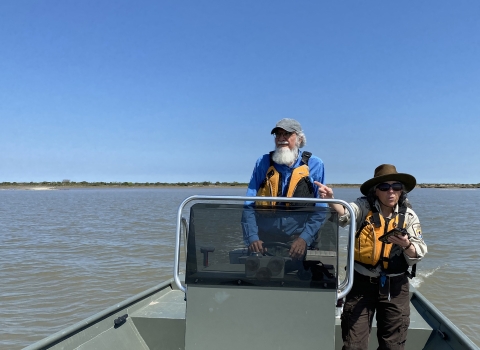Congress created HCPs in 1982 to protect a species while allowing economic development. An HCP allows the agencies to permit "taking" of individual endangered or threatened species incidental to otherwise lawful activities, when the effects of the taking are mitigated and minimized by conservation measures. There more than 240 HCPs in effect and more than 200 under development.
The proposal would improve the way HCPs are developed and administered in five areas: establishment of measurable biological goals and objectives, use of adaptive management, monitoring, public participation, and determination of the duration of the incidental take permits. The guidelines would become an addendum to the agencies joint Handbook for Habitat Conservation Planning and Incidental Take Permitting Process.
"Weve learned a great deal about what makes an effective HCP as weve worked with hundreds of landowners and other partners to develop voluntary agreements over the past four years," said Jamie Rappaport Clark, director of the U.S. Fish and Wildlife Service. "These guidelines incorporate what weve learned into the joint handbook so the HCP process can even better conserve wildlife while ensuring certainty for landowners and other applicants.
"We are pleased that so many private landowners, as well as state and local governments, are taking advantage of the HCP program," said Terry D. Garcia, Commerce Department Assistant Secretary for Oceans and Atmosphere. "We believe the public will be pleased that we are responding to their comments on how the program can be improved and that we are willing to make changes as the program grows.
The draft addendum announced today proposes that all future HCPs incorporate and clearly state biological goals and objectives. Although biological goals and objectives were implicit in past HCPs and their operating conservation programs, they were not explicitly stated. These goals and objectives will provide clear guidance for both the applicant and the agencies regarding the purpose and direction of the HCPs operating conservation program.
The draft addendum also proposes guidelines for developing an adaptive management strategy, which would be necessary if significant biological data gaps exist for covered species when an HCP is approved. When an HCP incorporates an adaptive management strategy, the implementing agreements permit would clearly state the range of possible adjustments and the circumstances under which it would be triggered. The applicant would be able to assess the potential economic impacts of such adjustments before agreeing to the HCP permit.
"We want to ensure each HCP has measurable goals and objectives and includes, where necessary, the flexibility to adjust the conservation actions as circumstances change or as more information becomes available," Clark said. "At the same time, we want to give applicants certainty about what we will require them do under different circumstances.
The draft addendum also builds on current guidance for establishing monitoring programs to ensure proper compliance with an HCP, to determine whether biological goals and objectives are being met, and to guide an adaptive management strategy, if one is used.
In addition, it provides guidance on factors to consider in establishing the duration of incidental take permits. These factors include duration of the applicants proposed activities, possible positive and negative effects on covered species, the extent of scientific and commercial data underlying the HCPs operating conservation program, the length of time necessary to achieve the benefits of the conservation program, and the extent to which the program incorporates adaptive management strategies.
The proposal calls for increased public participation in the HCP process. This would mean a minimum 60-day public comment period for most HCPs and a minimum 90-day comment period for most large- scale, regional, or exceptionally complex agreements. The exception would be HCPs that qualify as "low effect"--those defined as involving minor or negligible effect on listed species, their habitats, or other environmental resources--which would have a 30-day comment period.
The two agencies are soliciting comments, recommendations, or suggestions from the public, other concerned government agencies, the scientific community, industry, or any other interested party about this draft addendum.
The proposal guidelines were published in todays Federal Register. Comments may be made in writing to Division of Endangered Species, U.S. Fish and Wildlife Service, 4401 North Fairfax Drive, Room 452, Arlington, Virginia 22203 (fax: 703- 358-1735) or Office of Protected Resources, National Marine Fisheries Service, 1335 East-West Highway, Silver Spring, Maryland 20910 (fax: 301-713-0376). The deadline for comments is May 8, 1999.
The U.S. Fish and Wildlife Service is the principal Federal agency responsible for conserving, protecting, and enhancing fish and wildlife and their habitats for the continuing benefit of the American people. The Service manages the 93-million-acre National Wildlife Refuge System comprised of more than 500 national wildlife refuges, thousands of small wetlands, and other special management areas. It also operates 66 national fish hatcheries and 78 ecological services field stations. The agency enforces Federal wildlife laws, administers the Endangered Species Act, manages migratory bird populations, restores nationally significant fisheries, conserves and restores wildlife habitat such as wetlands, and helps foreign governments with their conservation efforts. It also oversees the Federal Aid program that distributes hundreds of millions of dollars in excise taxes on fishing and hunting equipment to state fish and wildlife agencies.


